
Kashmir is widely known for its Rogan Joshs, goshtabas, yakhnis, salans. But the Kashmiri Pandits make some delicious vegetarian dishes too, not found in restaurants -- like haakh (collard greens), kathal or jackfruit curries, Nadru Yakhni, the asli (authentic) thankfully-minus-the-cherry-garnish Dum Alu and more.

If you eat them in Kashmir, they taste all the better because the state has excellent sabzis. The other ingredients, like spices, saffron, cumin, cloves specifically, and milk are so fresh too. Should you travel to Kashmir and view the vegetables on sale, especially at the dreamy early morning floating market on Dal Lake, you will realise where some of India's finest produce can be found.

The tenderest eggplant, sweet but peppery-tasting mulee, snowy heads of cauliflower, the lushest greens, a rainbow spread of flowers and, of course, the crispest, reddest apples are sold out of long shikaras in a willow-lined corner of this grand lake. The haggling and bargaining happens pretty gracefully too.
I heard from my cousin Vinay that Kashmiri Pandits also make a very simple but tasty paneer dish called Methi Chaman, and vaguely remember eating it in Kashmir. His wife Shonu gave me the recipe. She, in turn, learnt it from her mother-in-law and Shonu added her own special elevating touches. Her mother-in-law was my chachi, Sheela Pande, who lived in Mumbai, and we called Mama, who learned it from her Kashmiri neighbour. That's how great recipes get passed around in India!

My aunt, a fine cook herself, picked up quite a few Kashmiri dishes from this neighbour, the indomitable, redoubtable, Geeta Bakshi, who was virtually a landmark of Colaba and died in her mid-90s a few years ago. Mrs Bakshi, whose real name was Krishna, was a character and a half. She was a Lahori Kashmiri, the daughter of an eminent doctor and the head of Lahore's Sir Ganga Ram Hospital, one of the largest pre-Partition hospitals.
Mrs Bakshi was tall and large with a big bun, had sharp eyes which missed nothing whatsoever and a booming voice. She was to be feared, because succinct criticism was always bubbling just below the surface of whatever she had to say and would, more often than not, finally find its way out of her mouth. She commented on everything from appearances, skin colour, feminine skills, manners etc etc.
She was also generous to a fault, according to my cousin, and an intriguing personality.
"She even attended the Nanavati murder trial (Commander Cawas Manekshaw Nanavati in April 1959 had shot Prem Ahuja, his wife Sylvia's lover) every single day and would come back from court and tell us what had happened, blow by blow. And then add her commentary on what she would do if she were Captain Nanavati."
Mrs Bakshi made top-notch Kashmiri fare. When she made Methi Chaman she mixed the methi greens with a little fresh palak too -- two parts methi to one part spinach. The dish is lightly spiced, elegant and does not call for that usual rigmarole of bhunoed onions, garlic, cream and tomatoes. Nor are the greens pureed in the blender to baby mush. The methi, freshly-pounded hing and mustard oil give the paneer all it needs.
I made the dish, as per the recipe below, with a few modifications from the original, so do go ahead and sample a little taste of Kashmir.

Methi Chaman
Serves: 3-4
Ingredients
- 1 small bundle, about 200 gm spinach, hard stems and roots removed
- 1 large bundle, about 250 gm, methi or fenugreek leaves
- 400-500 gm best-quality paneer, homemade paneer does well
- Mustard oil, for shallow frying the paneer, about 8-10 tbsp
- 2½ tsp freshly-pounded hing or asafoetida (use whole crystalline hing)
- 2 tsp haldi or turmeric
- 1-2 tsp mirchi or red chilly powder
- 1 tbsp dhaniya or coriander powder
- Salt, about 1 tsp +1-2 tsp for soaking the paneer in
- 1 tbsp julienned ginger
- 1 tbsp ghee
- 1 tbsp butter
- 1 tsp jeera or cumin seeds
- 4-5 cups hot water
Method
- Cut the paneer into small 1-cm cubes.
Heat the mustard oil in a large frying pan over medium heat with 1 tsp of the haldi and 1 tsp of the hing.
Add in half the paneer pieces and fry, flipping often. - Meanwhile bring 4-5 cups of water nearly to a boil in a saucepan and add 1-2 tsp salt, the remaining 1 tsp haldi and a dash (½ tsp) more hing.
Keep aside and ready. - When the paneer cubes gain a pinkish colour on all sides, drain from the oil and dunk into the hot salted hing water.
Fry the remaining paneer cubes and also add into the water.
Let the paneer soak, even for a few hours; it softens the paneer and rids it of excess oil. - Remove the methi leaves from the stalks and discard the stalks.
Chop finely and keep aside. - Chop the cleaned spinach finely and keep aside.
- In a kadhai or large saucepan heat up the butter, ghee and 1-2 tbsp of the leftover mustard oil (from frying the paneer) over medium heat and add the jeera seeds, the remaining haldi and the remaining hing.
Then add the red chilly powder and the chopped methi.
Fry for 8 to 10 minutes till the water in the methi reduces a little and it dries some.
Add in the spinach, ginger, salt, and the dhaniya powder. - Fry both greens for another 10 minutes.
- Then add in the soaked paneer and combine carefull but well and cook for another 5 minutes about.
- Serve hot with rotis, naans, puris, luchis or parathas.
Zelda's Note: It's very important to use whole hing for this recipe, which you pound in a mortar and pestle, because most pre-ground hing powder available usually has gluten mixed in it. It takes a little doing to pound it, because it's hard and crystalline but it's a must. I added 2½ tsp hing in this recipe, but reduce if you are not partial to hing like me, or prefer less hing.
At my cousin's home, they add in a little green and brown elaichi (cardamom) -- the crushed seeds -- in the tadka/baghar and later some garam masala powder and tej patta. I chose not to. You can a little yoghurt or dahi in the end too. Also, for authenticity, instead of red chilly powder they prefer adding 1-2 whole Kashmiri mirchis.
You can also follow the same recipe to make Palak Chaman by doubling the quantity of spinach and omitting the methi greens.
While making paneer, remember 1 litre of full-fat milk yields about 150 gm homemade panee, so for this recipe you would need at least 3 litres full-fat milk and an extra 45 minutes preparation time because the paneer would need half an hour of pressing time. To make paneer at home, follow recipe Neena Gupta's recipe.
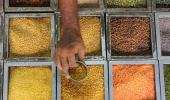
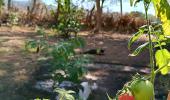

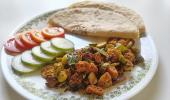




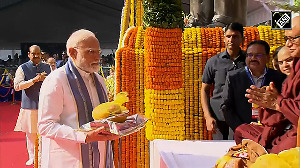

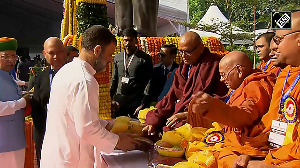
 © 2025
© 2025